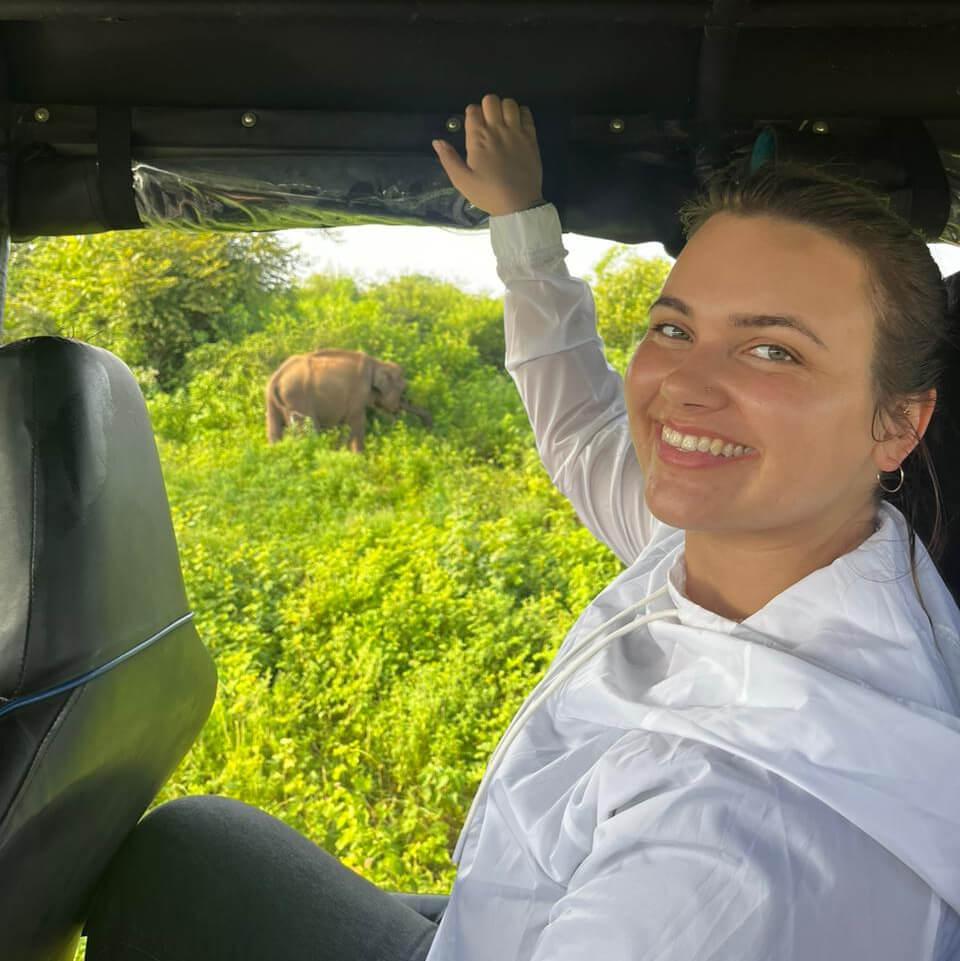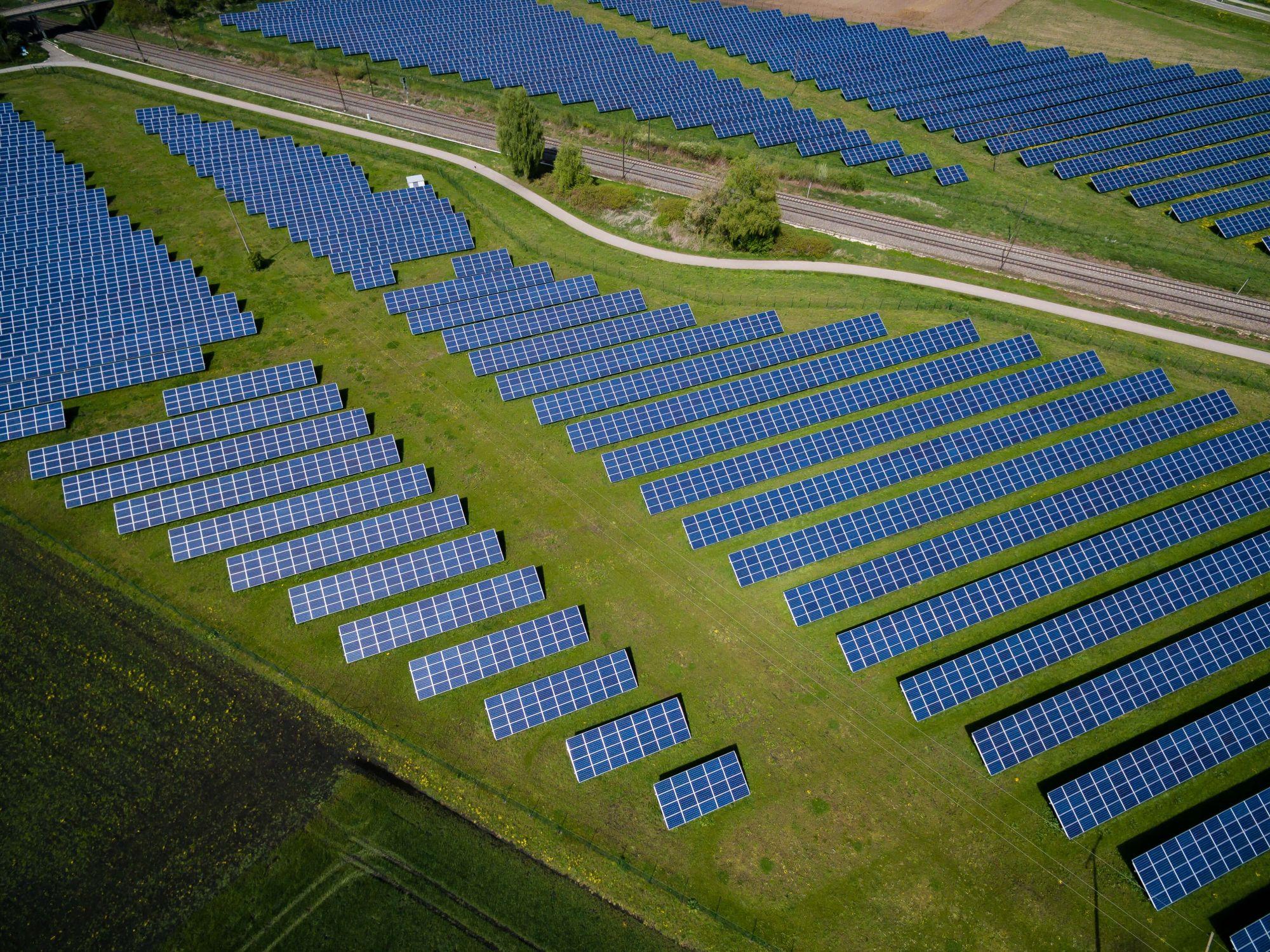There’s No Such Thing As Waste
Marina Chahboune of Closed Loop Fashion is on a mission to revolutionise textile recycling. By helping factories turn old fabrics into sustainable materials, she’s showing the world that recycling, while vital, isn't the only answer.
Marina Chahboune stands in a Finnish science museum pressing buttons on a digital exhibition - watching polar ice caps form and melt, form and melt, back and forth. A fashion design student studying in Finland, Marina wasn’t very familiar with marine biodiversity. It’s 2009.
“I thought the exhibit was a display of ice caps in the summer versus the winter,” Marina recalls, laughing. Shocked to discover that the exhibit represented a projection of the melting of ice caps in the decades to come, Marina plunged into climate literature. Which, at the time, was limited.
She came across a book by German explorer and writer Arved Fuchs detailing his annual sailing adventures through the Northwest Passage. For years, winters were difficult for Fuchs. He would get stuck for weeks and months on end, waiting for the thick frozen ocean to warm so he could pass. Until, one year, in the depths of winter, he sailed through the passage without stopping.
“This story was my wake-up call. The entire book startled me - particularly a chapter about fashion and how textile production is one of the most polluted industries. What did fashion have to do with the polar ice caps? I started to question everything.”
It wasn’t an overnight transformation, but Marina was determined to fast-track her climate action. And she was intent on doing so in the industry that had drawn her to fashion in the first place—the very industry that Fuchs detailed as one of the most polluted: textiles.
Is it Really Full Circle?
When we talk circular fashion, the focus often shifts to post-consumer waste and fast fashion - donating old clothes, shopping second-hand, and making conscious buying decisions. Rarely does the conversation return to the source.
“If we look into manufacturing waste occurring at the different tiers, from fibre production and yarn production to fabric and garment making, we lose up to 47% of the material throughout the process,” Marina stresses. “We lose the most in the cutting process, with an average of 15%, but often even anywhere from 20-30% of the material is lost at that stage.”
The climate implications of post-industrial textile waste have pushed Marina to explore new methods. In 2011, she founded Closed Loop Fashion, a consulting firm dedicated to making sustainable and circular fashion a reality. “Post-industrial waste and post-consumer waste have different impacts on the environment, but both can be negative. The waste from a thrown t-shirt is similar to its waste during production.”
The average apparel factory discards 27,215 kg of usable materials each week. Larger garment factories easily discard between 400 and 700 tons of textile waste per month. Closed Loop Fashion is dedicated to supporting factories on their journey towards sustainability and rerouting waste from landfills back into further usage and reuse.
Marina and her team have developed textile waste management standards and implemented them at factories around the world, particularly in the global south. “We assess textile waste management in factories and then help manage, segregate, label, and monitor this waste. We find partners—regional or international—such as waste collectors, handlers, recyclers, or designers for further usage.”
One of the biggest issues is that many countries do not have reliable waste management systems in place, which, unfortunately, results in practices such as illegal textile waste burning or dumping.
If you dig a little deeper, textile waste is more than the yarn bits and fabric scraps from the cutting room: “There is also deadstock of unused fabric rolls, and lots of overstock of finished goods as many brands overproduce to ensure they always have 100% stock available.”
Imagine a brand launches three dress styles for the summer market. While two designs become best sellers, flying off the shelves, the third is less popular. It's discounted, with the remaining stock sold to bargain hunters glad to snag a deal. The rest of the stock? “It just stays in the retail warehouse,” Marina explains.
She continued to dig deeper, explaining that there is also an excess of the original fabric rolls designated to these brand’s orders, in addition to the typical post-industrial waste left in factories. “Brands use very recognisable trademarks in their products - colours, logos, textures, prints - none of this can be sold to the local markets in the countries of production. Many times, this overstock has to be destroyed.”
Without adequate waste management and recycling systems, all this waste—whether complete pairs of jeans or fabric scraps from production— is at risk of being disposed of in harmful ways, such as burning, landfill dumping, or even in wastelands or reservoirs where landfill infrastructure is lacking, posing extreme risks to local communities.
“It’s contradicting to, on the one hand, say, ‘We do resale, we secondhand sales, but on the other hand, you ask for high value, completely new products to be destroyed in big amounts in your facilities,” Marina explains.
Recycling textile waste is not an innovation; it’s a lesson we need to learn from those who have been doing this for generations. They’re the real leaders in this field.
From the Bottom Up
Most textile production occurs in the Global South, where many host countries have rich histories in textiles.“Many of the factories I work with are family-owned and have been for generations,” explains Marina. “They’ve been beautifully grown and cared for, passed from generation to generation.” She emphasises that it’s critical to keep this in mind when addressing sustainability in textiles.
The majority of these communities are economical in how they run their factories. “Given their spot in the supply chain, they end up receiving very little of the end profit.”
In a way, one might wonder if the path towards sustainability requires less innovation and more of a return to basics, learning from the historic leaders in the textile industry.
“They've always prioritised energy efficiency and sustainability, reusing and recycling to reduce costs and impact. Prior to mass production and global demand, they always reused leftover fabric. They also care for their reputation and people, knowing that a good reputation helps attract a workforce.”
Marina reflects, “I respect these communities; they teach me so much about what’s really needed in the industry. Recycling textile waste is not an innovation; it’s a lesson we need to learn from those who have been doing this for generations. They’re the real leaders in this field.”
Globalisation and consumer demand have created an unjust and inefficient system for the industry; Closed Loop Fashion is championing practices and resources to close some of the gaps before it’s too late. “We need comprehensive data on waste flows and recyclers and waste collectors to attract investment and government support to establish better, localised recycling ecosystems.”
“Waste doesn’t have a high value right now, so there’s little ambition for the factories to manage this waste type and for waste handlers to trade with it.”
For Marina, the establishment of waste management practices, access to data, and investment are the final threads in directing textile waste to more preferred disposal methods, such as recycling.
The Source
Ultimately, it comes down to the source of our clothing—not the brand or the country of production, but the actual source of the yarn and fabric. “As consumers, we can make informed decisions and choose to buy something with 50% recycled content. If we all take small steps, we will eventually see big changes in the industry,” Marina reflects.
While Closed Loop Fashion is pioneering a second life for textile waste from the inside out, others are reimagining textiles from the outside in.
"We wondered if we could improve the industry using existing plastic waste," says Emma Barber, Managing Director of DGrade. Based in the UAE, DGrade's primary innovation is Greenspun™ yarn, made from recycled plastic bottles. "We recycle 1 billion bottles a year in our Abu Dhabi factory and promote recycling through our Simply Bottles Recycling Initiative, a recycling education program involving over 250 schools across the UAE."
With an estimated 1kg of fabric generating 23kg of greenhouse gasses, DGrade is keen to generate change directly from the source. Greenspun yarn not only addresses plastic pollution but also saves 55% CO2 emissions, 50% energy, 20% water and 100% oil, compared to virgin polyester yarn.
Community involvement in the UAE has been crucial to the company’s success, Emma explains. “Schools and offices participate in recycling initiatives, and months later, we produce t-shirts and bags for these institutions. It truly comes full circle when the yarn used in clothing reflects the community’s recycling efforts.”
Marina also acknowledges the benefits of recycled polyester but reminds me it’s not the solution in the textile industry. “It can be great, and there are some companies really doing it right. But across the Global South, you also see a lot of inequalities and gaps in polyester recycling efforts.” She emphasises that true closed-loop material cycles should come from recycling the textile industry’s own polyester waste rather than relying on PET bottles, which are a by-product of the food and beverage industry and should remain there.
“Recycling PET bottles has many benefits, but at the end of the day, it’s not solving any of the existing problems in the textile industry.”
Both Marina and Emma emphasise the importance of securing sources and supply chains to produce high-quality fibres and build trusted brands. “Many brands are offering more sustainable options, yet there's still a long journey ahead,” reflects Emma. “Consumer awareness and behaviour are crucial in promoting sustainable fashion.”
Collective Efforts to Create Value
“We are in the very early stages when we talk about post-industrial waste. Textile waste currently has very little value in most regions.” Marina sighs, continuing in a hopeful tone, “You have to create value for it to be valued.”
As overwhelming as it feels, sustainability in textiles has the potential to ground us in a way that circular fashion has failed to do so far. Marina advises, “We must return to the communities that gave us textiles in the first place - take their wisdom, their lessons, and scale them.”
At the end of our conversation, once we’d discussed the gaps, challenges, and hurdles hampering the industry, Marina encouraged me to read the adventures of Arved Fuchs. “He single-handedly inspired my climate journey,” she reflects.
“Because of him, I’ve dedicated my life to making sustainable and circular fashion a reality. I didn’t expect to find motivation or my calling in the polar ice caps. But here we are,” she laughs, “full circle.”
Most Popular
The Climate Tribe delivers stories about Biodiversity and Conservation, Circular Economy, Food and Water , and how they intersect with climate.
Subscribe
Get the latest stories inspiring climate action around the globe straight to your inbox.





